Sintra-Portugal.com
The best independent guide to Sintra
Sintra-Portugal.com
The best independent guide to Sintra
The Convento dos Capuchos, Sintra: An Independent Guide for 2026
The Convento dos Capuchos is an intriguing Franciscan monastery set amidst the dense forests and giant granite boulders of the Serra de Sintra hills.
This is one of the most fascinating religious buildings of Portugal, due to its harmonious intertwinement with its natural setting. Inside the convent, you’ll experience a glimpse into the austere living conditions of the monks, and marvel at a building uniquely decorated with cork.
Despite its charm, the Convento dos Capuchos remains one of Sintra's least visited tourist attractions, which means it always has a peaceful and calm ambience.
This tranquil setting includes the dense forests and scenic hiking trails that surround the convent, and the whole area is the perfect escape from the bustling tourism scene of Sintra.
This guide will show why you must visit the Convento dos Capuchos, helping you get the most from your trip here.
Highlights of the Convento dos Capuchos
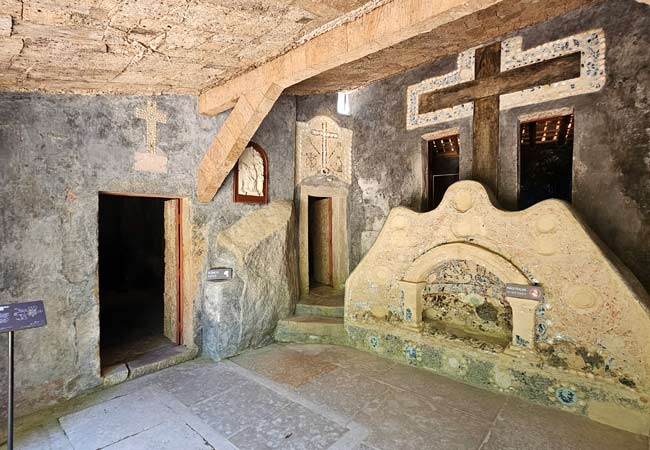
The Igreja Conventual – The simplistic church nestled below a giant boulder, which is reached via the decorative porch room.
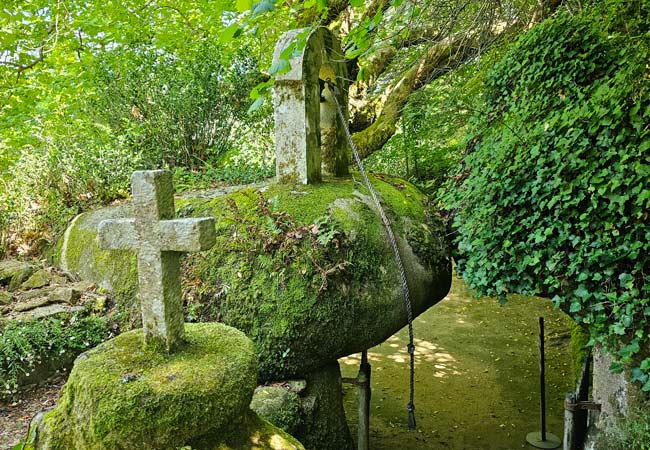
The bell courtyard – The charming entrance to the convent, blending religion and nature in harmony.
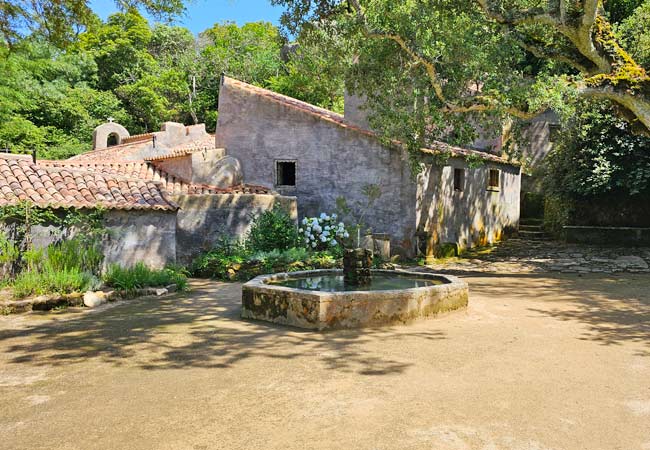
The Claustro – The main cloister of the convent, little more than a peaceful courtyard that exemplifies the simplistic lifestyle of the monks.
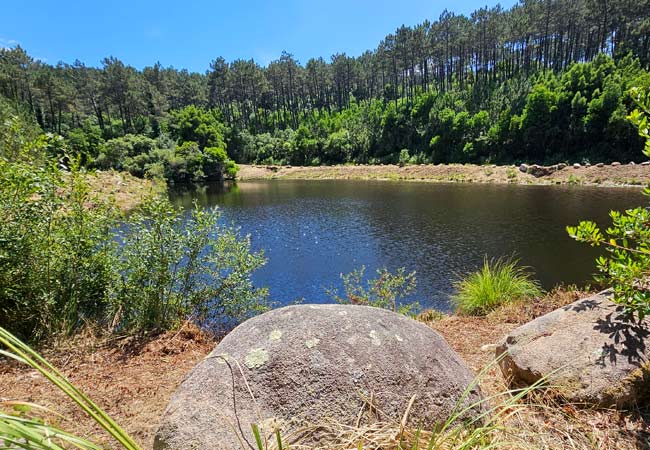
Lagoa dos Mosqueiros – The cooling and tranquil waters of the lake are just a 15-minute hike from Convento dos Capuchos.
Further details about the Convento dos Capuchos
The monastery, which dates from the 16th century, was constructed to be in harmony with the surrounding natural landscape, while the simplistic design reflects the austere and devout lifestyles the monks led.
The eight small dormitories bear a striking resemblance to prison cells, complete with stone beds, deliberately low ceilings - which caused the monks to perpetually bow - and minimal protection from the harsh winters.
The only material used for decoration and comfort was cork, as this could be harvested naturally, and it lines the chapel, doors and even the stone benches. This unique and skilful use of cork means the Convento dos Capuchos is often referred to as the ‘cork convent’.
The collection of small chapels, retreats, quarters and kitchens are all connected by narrow cave-like passages, while the landscape of giant boulders and dense forest all add to the harmonious atmosphere.
Convento dos Capuchos lies deep in the Serra de Sintra forests, and the remote location of the religious complex also allowed its residents complete segregation from the outside world.
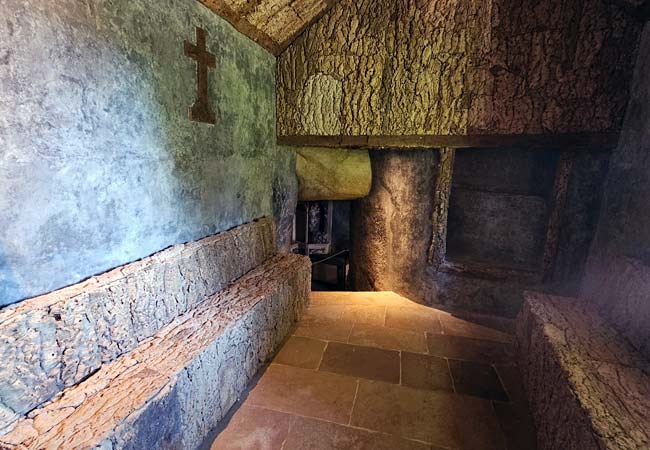
Cork was used for insulation, as padding on the stone benches and for decoration around the doors
Tourist information for the Convento dos Capuchos
The entrance fee is €7 for adults, and €5.50 for youths (6 to 17) or seniors (over 65). The Convento dos Capuchos is open every day from 9am until 6pm, with the last admission at 5pm. There is no need to pre-book tickets from the internet before your visit, as the site never gets busy.
The Convento dos Capuchos is not a large religious complex, and the main building can be easily seen within an hour, which could be extended by an extra 30 minutes if you include the viewpoints.
There are clean, modern toilets and a very small shop on site, but no café or restaurant. However, you can bring your own food and have lunch at the scenic picnic benches close to the entrance.
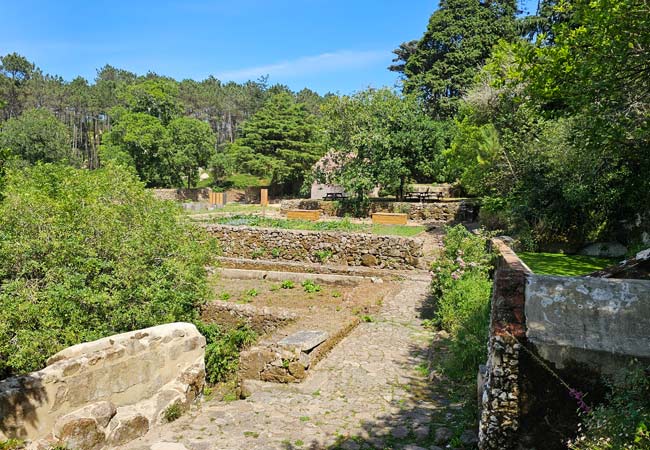
The monks tried to grow most of their own food and were nearly self sufficient
Travel to the Convento dos Capuchos
The Convento dos Capuchos is located 4.5km to the west of Sintra at GPS 38.78432, -9.43706.
It is only accessed via the N247, which runs to the south of the convent and involves a 16km twisting drive from the centre of Sintra.
Note: On maps, there may appear to be roads that cross from the N375 (to the north of the Convento dos Capuchos), but these are closed to the public and only used for fighting fires in the forests.
It is also very easy to miss the entrance to Convento dos Capuchos when travelling westward from Sintra, as the entrance is slightly hidden away:
Once at the site, there is a decent, free car park.
Travelling to the Convento dos Capuchos is challenging without a car. The only options are taxi or ride hailing app (such as Uber or Bolt) as there is no public transport here. A taxi fare will be expensive (€25 to €30), while an Uber or Bolt ride will be much cheaper (€6 to €15 depending on demand and availability of cars).
Often, the problem is getting back to Sintra after visiting the Convento dos Capuchos. There will never be any taxis waiting and it can be a long wait for an Uber or Bolt. Drivers may refuse a long, out-of-the-way drive, and there may be extreme demand for fares to/from the Pena Palace.
If you enjoy hiking, an alternative for a cooler day is to walk the forested footpaths from the Palácio de Monserrate. This route is 2.5km long (about 35 minutes) and passes the Lagoa dos Mosqueiros. However, it does involve some demanding hills that are especially draining in the hot summer's sun. The route can be seen on google maps here.
For this option, you could catch the 435 bus from Sintra train station (€3.75 single) to the Palácio de Monserrate and then hike to Convento dos Capuchos. An even longer day could involve a visit to Monserrate in the morning and Capuchos in the afternoon.
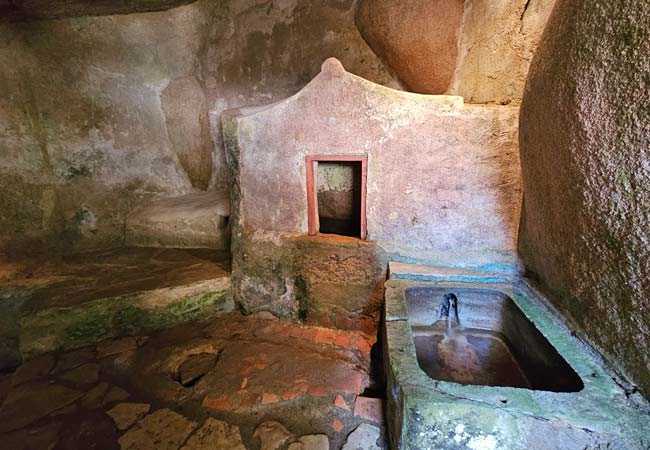
The simplistic bathroom and washing facilities, with a natural spring as a source of water
History of the Convento dos Capuchos Sintra
The Convento dos Capuchos in Sintra was founded in 1560, and the oldest remaining section is the Chapel of Santo António, which was constructed in 1580. In 1581, the complex received a royal blessing from King Filipe II, and the encircling wall was also built that year. The monastery only ever had a maximum occupancy of eight monks.
The most famous monk who lived in the Convento dos Capuchos was Friar Honório. He spent 15 years in isolation and penance but lived to the age of 100. The entire site was abandoned after religious orders were abolished in Portugal in 1834. Notable dates in the convent’s history are:
1560: The convent was established under the directive of D. Álvaro de Castro, with eight monks from the Arrábida convent.
1578 to 1580: Under the supervision of Cardinal Henry, the Chapel of Santo António was constructed, and the convent received a protective wall.
1580: Newly crowned King Philip II of Spain, who also ruled Portugal, visited the convent.
1596: Friar Honório, renowned for his life of penance and one of the initial eight friars, passed away.
1610: Mural paintings were added to the exterior of the Chapel of Senhor Morto.
1834: The convent changed hands due to the dissolution of religious orders, and it was acquired by D. António de Saldanha Albuquerque e Castro Ribafria.
1873: Sir Francis Cook, 1st Viscount of Monserrate, acquired the convent.
1949: The Portuguese State procured the site, establishing state ownership of the convent.
1998: The property was closed off to the public due to safety and degradation issues.
2001: Under the supervision of Parques de Sintra Monte, the convent was reopened to the public.
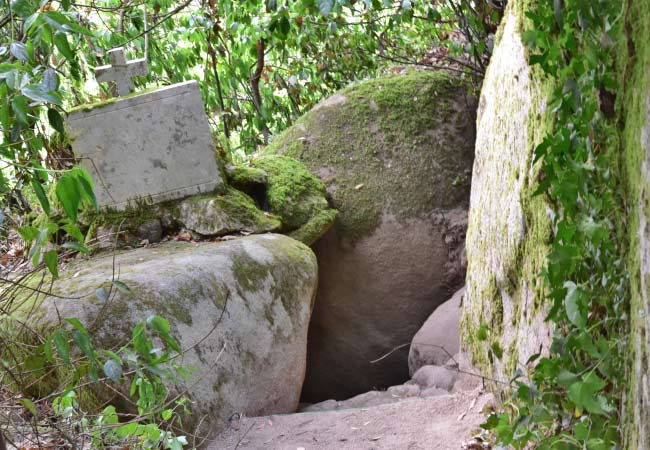
The cave where Friar Honório resided in for 15 years
Our most popular guides to Sintra
If you've found our content valuable, we'd welcome your support.
The digital publishing landscape has evolved significantly. As a small independent publisher, we face growing challenges. Search engines increasingly favour paid content over organic results, while AI-generated content often reproduces original work without attribution.
To support our work, please consider bookmarking this page (press Ctrl + D) for quick access. If you find an article helpful, we'd be grateful if you'd share it with friends on social media.
For specific questions, please see our Reddit community at r/LisbonPortugalTravel.
Should you notice any outdated or incorrect information, please contact us at [email protected]
Thank you for helping us continue to provide valuable content in an increasingly challenging digital environment.
A complete list of all of our Sintra and Lisbon guides
If you've found our content valuable, we'd welcome your support.
The digital publishing landscape has evolved significantly. As a small independent publisher, we face growing challenges. Search engines increasingly favour paid content over organic results, while AI-generated content often reproduces original work without attribution.
To support our work, please consider bookmarking this page (press Ctrl + D) for quick access. If you find an article helpful, we'd be grateful if you'd share it with friends on social media.
For specific questions, please see our Reddit community at r/LisbonPortugalTravel.
Should you notice any outdated or incorrect information, please contact us at [email protected]
Thank you for helping us continue to provide valuable content in an increasingly challenging digital environment.





























